Exploring Ancient Civilizations: Carthage National Museum vs Alexandria National Museum
What are the unique artifacts on display at the Alexandria National Museum and the Carthage National Museum?
At the heart of ancient history lie the unique artifacts that not only represent cultural heritage but also serve as a direct link to our ancestors. Let’s delve into the standout artifacts of the Alexandria National Museum and the Carthage National Museum.
The Alexandria National Museum, housing over 1,800 artifacts, is a treasure trove of ancient Egyptian, Roman, and Greek antiquities. Its collection consists of a myriad of statues, jewelry, pottery, and mummies. One of its most distinguished artifacts is a granite statue of the Pharaoh Akhenaten, the revolutionary ruler who brought monotheism to Ancient Egypt.
The museum also boasts an impressive collection of Greco-Roman artifacts, including stunning mosaics and sculptures that illustrate the cultural amalgamation of these civilizations in Egypt. The Egyptian Christian artifacts and Islamic Art section provide an enriching insight into the evolution of religious beliefs and practices in Egypt.
On the other hand, the Carthage National Museum sits atop Byrsa Hill, the central part of ancient Carthage. The museum’s most renowned exhibit is the “Child’s Room,” containing the relics of child sacrifices, a grim yet vital part of Carthaginian history. These artifacts include urns with remains of children, vividly illustrating a dark side of ancient Carthaginian culture.
Additionally, the Carthage National Museum has a fascinating collection of Punic and Roman artifacts, showcasing the diverse influences that have shaped the city. Highlights include intricate mosaics, Roman statues, and the remnants of a Roman villa.
In conclusion, the Alexandria National Museum and the Carthage National Museum, each with their distinctive artifacts, offer visitors a remarkable journey through the times, cultures, and lives of the ancient civilizations they represent.
What historical periods do the Alexandria National Museum and the Carthage National Museum cover?
Understanding the historical periods that the Alexandria National Museum and the Carthage National Museum cover is crucial to comprehend the evolution and influences of the cultures they embody.
The Alexandria National Museum is unique in its comprehensive coverage of Egypt’s history, spanning from the Pharaonic period to the Byzantine era. The museum is segmented into three main sections: the basement features Pharaonic artifacts, the ground floor displays the Greco-Roman era, and the first floor is dedicated to Coptic Christian and Islamic Art.
As visitors progress through the museum, they walk through millennia of Egyptian history, witnessing the transformations in art, religion, and societal norms. It’s a journey from the ancient Pharaohs through the Greek Ptolemaic dynasty and the Roman era, to the advent of Christianity and Islam in Egypt.
The Carthage National Museum, on the other hand, primarily focuses on the Punic and Roman periods of Tunisia. The Punic period marks the establishment and flourishing of the ancient city of Carthage by the Phoenicians. The Roman period, which followed the Punic era, transformed the city under Roman rule, evidence of which is found in the Roman artifacts and architectural remains in the museum.
In essence, while the Alexandria National Museum provides a sweeping view of Egyptian history from ancient times to the Byzantine era, the Carthage National Museum offers in-depth insight into the Punic and Roman eras of Tunisia’s history. Both museums, in their coverage of these historical periods, provide a broader understanding of the Mediterranean world’s ancient history.
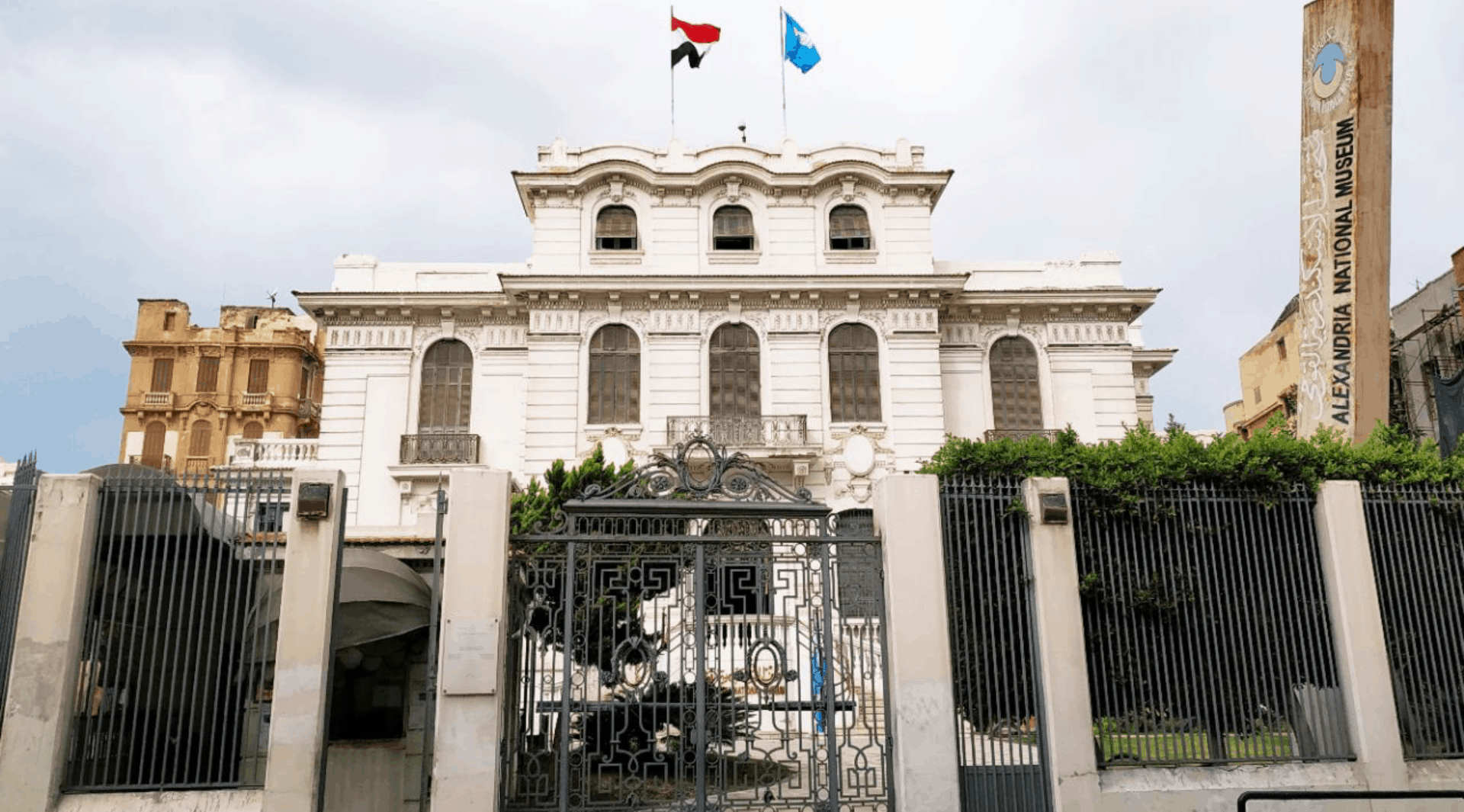
What are the differences in the collections between the Carthage National Museum and the Alexandria National Museum?
Comparing the collections of the Carthage National Museum and the Alexandria National Museum, there are key differences influenced by the distinct histories and cultures of Carthage and Alexandria.
The Carthage National Museum’s collection emphasizes artifacts from the Punic and Roman eras, reflecting the city’s origins as a Phoenician colony and later as a significant city in the Roman Empire. Notably, the museum houses a significant collection of Punic stelae and urns, including the infamous “Tophet” artifacts associated with child sacrifices. The museum also exhibits the remnants of Roman buildings and mosaics, indicating the Roman influence after the fall of Carthage in the Punic Wars.
In contrast, the Alexandria National Museum’s collection spans a broader timeline, showcasing Egyptian history from the Pharaonic period through the Byzantine era. This timeline enables the museum to display a variety of artifacts, including Pharaonic statues and sarcophagi, Greco-Roman mosaics and sculptures, and pieces from the Christian and Islamic eras. This expansive collection embodies Alexandria’s role as a crossroads of cultures throughout its history.
Furthermore, the Alexandria National Museum places a strong emphasis on preserving items specifically discovered in Alexandria, including relics from the sunken city of Heracleion. Meanwhile, the Carthage National Museum focuses on artifacts from the city of Carthage and other archaeological sites in Tunisia.
How do the architecture and design of the Alexandria National Museum and the Carthage National Museum reflect their respective ancient civilizations?
The architecture and design of a museum can often tell a story just as compelling as the exhibits within. Both the Alexandria National Museum and the Carthage National Museum embody elements of their respective ancient civilizations in their design and architecture.
The Alexandria National Museum is housed in a restored Italianate mansion, known as the Al-Saad Bassili Pasha Palace, reflecting Alexandria’s cosmopolitan history. The exterior’s neoclassical architecture pays homage to the city’s Hellenistic past, while the interior design elegantly showcases artifacts in a timeline, capturing the essence of each historical period represented.
Moreover, the use of traditional Egyptian motifs and symbols in the display rooms further enhances the connection to the country’s ancient civilization. The architectural design of this museum not only provides a space for the display of artifacts but also complements and accentuates their historical significance.
Conversely, the Carthage National Museum’s design is more reflective of its unique location and the cultures it represents. It is situated on Byrsa Hill, where the ancient city of Carthage once stood, offering panoramic views of the city’s archaeological sites. The museum itself is a blend of modern and traditional Tunisian architecture, highlighting the intersection of ancient and contemporary cultures.
The museum’s layout underscores the narrative of Carthaginian and Roman history, with outdoor displays of Roman columns and statues signifying the city’s transformation under Roman rule. Thus, the Carthage National Museum’s architecture and design serve as a testament to the city’s resilience and the layered histories that define it.
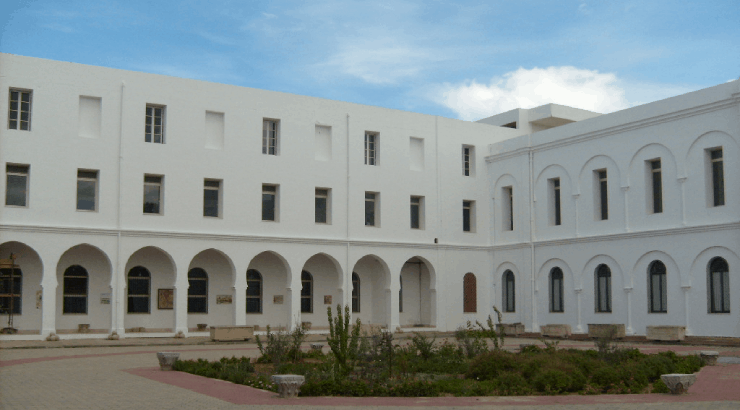
What types of educational resources and programs do the Carthage National Museum and the Alexandria National Museum offer?
Museums, beyond being repositories of historical artifacts, play a crucial role in educating the public about past civilizations. Both the Carthage National Museum and the Alexandria National Museum offer a range of educational resources and programs.
The Alexandria National Museum provides an immersive learning experience for visitors through interactive exhibits and well-detailed display cards offering comprehensive information about the artifacts. For young visitors, the museum offers educational programs that incorporate art and history workshops, storytelling, and guided tours. Moreover, scholars and researchers have access to a wealth of information about the extensive periods of Egyptian history represented within the museum.
The Carthage National Museum also focuses on educational engagement. It offers educational tours that not only showcase the artifacts but also emphasize the city’s historical context and architectural significance. The museum has also developed programs for school groups, including guided tours and educational workshops. The museum’s placement on Byrsa Hill, overlooking the archaeological ruins of Carthage, provides an on-site learning experience that significantly enhances the educational value.
What are some of the key discoveries or exhibits at the Alexandria National Museum and the Carthage National Museum?
The Alexandria National Museum and the Carthage National Museum are home to significant discoveries that have expanded our understanding of ancient civilizations.
In the Alexandria National Museum, one of the key exhibits is the granite statue of Pharaoh Akhenaten, a central figure in the evolution of religion in ancient Egypt. Also noteworthy is the underwater archaeology exhibit that features artifacts retrieved from the sunken city of Heracleion, including a black granite statue of a Ptolemaic queen and a colossal statue of the god Hapy, the largest statue of a god ever discovered in Egypt.
Another significant discovery is the museum’s collection of artifacts dating back to the Fatimid Caliphate. This collection, including ceramics, coins, jewelry, and textiles, sheds light on the lesser-known era of Islamic history.
The Carthage National Museum is renowned for the “Child’s Room,” displaying urns and stelae related to child sacrifices in ancient Carthage. These artifacts have provided valuable insights into the religious rituals and societal norms of the Carthaginian civilization.
One of the museum’s most significant exhibits is the Punic stelae featuring symbols associated with Tanit, the chief deity of the Carthaginians. This collection has greatly contributed to understanding the Punic script and religion. Furthermore, the museum houses a reconstructed Roman villa that highlights the architectural advancements during the Roman era in Carthage.
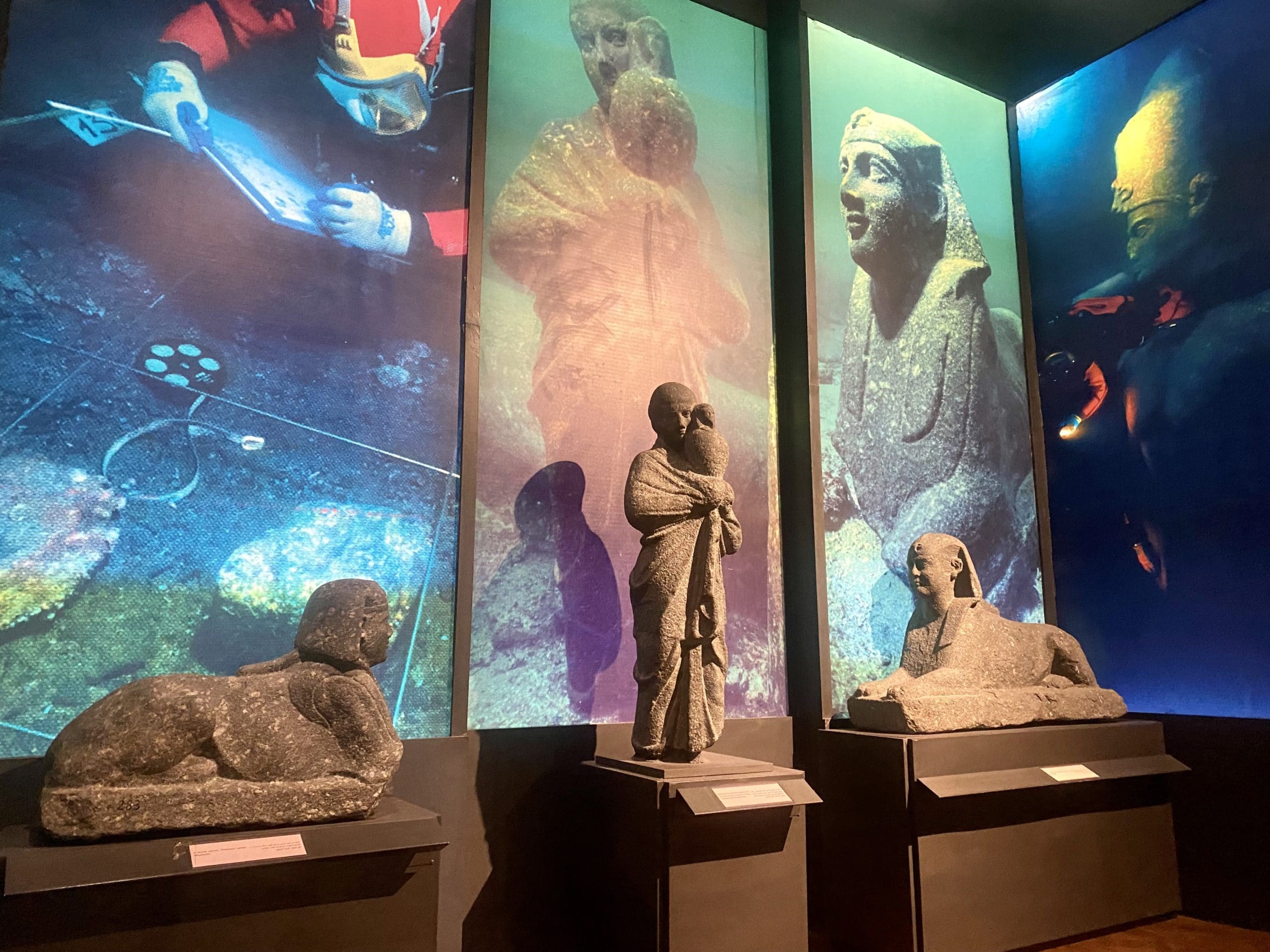
How do the Alexandria National Museum and the Carthage National Museum contribute to modern understanding of ancient civilizations?
The Alexandria National Museum and the Carthage National Museum play significant roles in illuminating our understanding of the ancient world. By curating extensive collections of artifacts and engaging in research and educational programs, these museums bridge the gap between the past and present.
The Alexandria National Museum’s diverse collection provides insights into the rich tapestry of cultures that influenced Egypt over millennia. The progression from the Pharaonic to the Byzantine era is represented in a coherent and engaging way, providing visitors with a comprehensive view of Egypt’s history. In particular, its underwater archaeology exhibit has offered unique insights into the vibrant, now-submerged city of Heracleion.
Moreover, the museum contributes to the understanding of the Ptolemaic era, a period of Hellenistic influence often overshadowed by Egypt’s Pharaonic history. Through its collection, the museum underlines the cultural interactions that occurred in Alexandria, one of the ancient world’s most cosmopolitan cities.
The Carthage National Museum contributes significantly to our understanding of the ancient Punic civilization and Roman Carthage. It offers insights into the religious, societal, and architectural aspects of these periods. The exhibits on child sacrifice in ancient Carthage, for example, provide a unique look into the religious practices of the time.
By housing one of the most extensive collections of Punic artifacts, the museum helps fill in gaps in our understanding of this important civilization that once rivaled Rome. Its exhibits on Roman Carthage illuminate the transformation that occurred under Roman influence, contributing to a nuanced understanding of the cultural dynamics of the ancient Mediterranean.
How have the Carthage National Museum and the Alexandria National Museum preserved and restored their artifacts and collections?
Preservation and restoration of artifacts are critical responsibilities of museums. The Alexandria National Museum and the Carthage National Museum both prioritize these aspects to ensure the longevity of their collections and the historical integrity of their exhibits.
The Alexandria National Museum, given its wide range of artifacts, employs a variety of preservation and restoration techniques. For instance, it uses temperature and humidity-controlled display cases to maintain the physical condition of delicate artifacts. Additionally, the museum has a dedicated team of restorers and conservators who work on the artifacts, using methods that range from traditional techniques to modern scientific approaches.
The Carthage National Museum also places a significant emphasis on preservation and restoration. Many of its archaeological artifacts, particularly those unearthed from outdoor sites, are susceptible to weathering. The museum invests in specialized conservation processes to ensure these artifacts’ longevity. For instance, it uses preservation methods such as controlled environments, chemical treatments, and protective coatings to safeguard its precious collection.
In addition, both museums follow international guidelines for artifact handling and storage. They also work with international conservation experts and participate in global conservation programs to continually enhance their preservation and restoration practices.
| Day | Carthage National Museum | Alexandria National Museum |
|---|---|---|
| Monday | 9 a.m. to 6 p.m. | 9 a.m. to 4:30 p.m. |
| Tuesday | 9 a.m. to 5 p.m. (Hours might differ) | 9 a.m. to 4:30 p.m. |
| Wednesday | 9 a.m. to 5 p.m. | 9 a.m. to 4:30 p.m. |
| Thursday | 9 a.m. to 5 p.m. | 9 a.m. to 4:30 p.m. |
| Friday | 9 a.m. to 5 p.m. | 9 a.m. to 4:30 p.m. |
| Saturday | 9 a.m. to 5 p.m. | 9 a.m. to 4:30 p.m. |
| Sunday | 9 a.m. to 5 p.m. | 9 a.m. to 4:30 p.m. |
Are there any special exhibits or upcoming events at the Carthage National Museum or the Alexandria National Museum that I should know about?
The Alexandria National Museum and the Carthage National Museum regularly host special exhibits and events to enhance visitor engagement and shed light on specific aspects of their collections. However, the specifics of these exhibits and events can vary year by year and even season by season.
In the Alexandria National Museum, a recent special exhibit focused on the underwater archaeology findings from the submerged city of Heracleion. This exhibit highlighted the city’s significance as an international trading hub and its unique cultural blend of Egyptian and Greek influences. Future events may include exhibits focusing on particular eras or aspects of Alexandria’s rich history, from its Pharaonic roots to its Greek, Roman, and Islamic periods.
The Carthage National Museum has been known to organize thematic exhibits that delve into specific aspects of Punic and Roman cultures. For example, a past exhibit focused on Punic religious practices, anchored by the museum’s collection of Tophet artifacts. Upcoming events could explore themes like the architectural transition from the Punic to the Roman era or the cultural impact of Roman rule on Carthage.
For the most up-to-date information on special exhibits and upcoming events, it is recommended to visit the museums’ official websites or contact them directly. This will ensure you don’t miss any unique opportunities to delve deeper into the histories of Alexandria and Carthage.
| Topic | Alexandria National Museum | Carthage National Museum |
|---|---|---|
| Unique Artifacts | Statue of Pharaoh Akhenaten, artifacts from sunken city of Heracleion | "Child's Room" artifacts, Punic stelae |
| Historical Coverage | Pharaonic era to Byzantine era | Punic era to Roman era |
| Collection Differences | Broad timeline, emphasis on artifacts found in Alexandria | Focus on Punic and Roman periods, artifacts from Carthage and other Tunisian sites |
| Architecture & Design | Restored Italianate mansion, layout follows historical timeline | Situated on Byrsa Hill, mix of modern and traditional Tunisian architecture |
| Educational Programs | Interactive exhibits, workshops, guided tours | Educational tours, school group programs, on-site learning |
| Key Exhibits | Granite statue of Pharaoh Akhenaten, artifacts from Heracleion, Fatimid Caliphate collection | "Child's Room", Punic stelae, reconstructed Roman villa |
| Contributions to Understanding of Ancient Civilizations | Provides comprehensive view of Egypt's history, unique insights into the Ptolemaic era | In-depth insight into Punic civilization and Roman Carthage |
| Preservation & Restoration | Temperature and humidity-controlled display cases, team of restorers and conservators | Specialized conservation processes, follows international guidelines |
FAQ – Carthage National Museum vs Alexandria National Museum
1. Are there guided tours available in both museums?
Yes, both the Alexandria National Museum and the Carthage National Museum offer guided tours. It’s recommended to check with the museums for the schedule and any additional costs associated with the tours.
2. Can children participate in educational programs at these museums?
Yes, both museums offer educational programs tailored for younger audiences. These can include workshops, storytelling sessions, and interactive exhibits.
3. How much time should I allocate to visit each museum?
A thorough exploration of each museum could take anywhere from a few hours to a full day, depending on your interest level and pace.
4. Do these museums offer resources for academic research?
Yes, both museums serve as important resources for scholars and researchers interested in ancient Egyptian, Punic, and Roman civilizations.
5. Are there any accessibility provisions at the museums?
Both museums have made efforts to be accessible to all visitors. However, it’s best to contact the museums directly for specific information regarding accessibility.
6. Can I take photographs inside the museums?
Photography rules can vary and may depend on the exhibit or artifact. Visitors are advised to check the museums’ photography policies.
7. Are there souvenir shops within these museums?
Yes, both the Alexandria National Museum and the Carthage National Museum have shops where visitors can purchase souvenirs and educational materials.

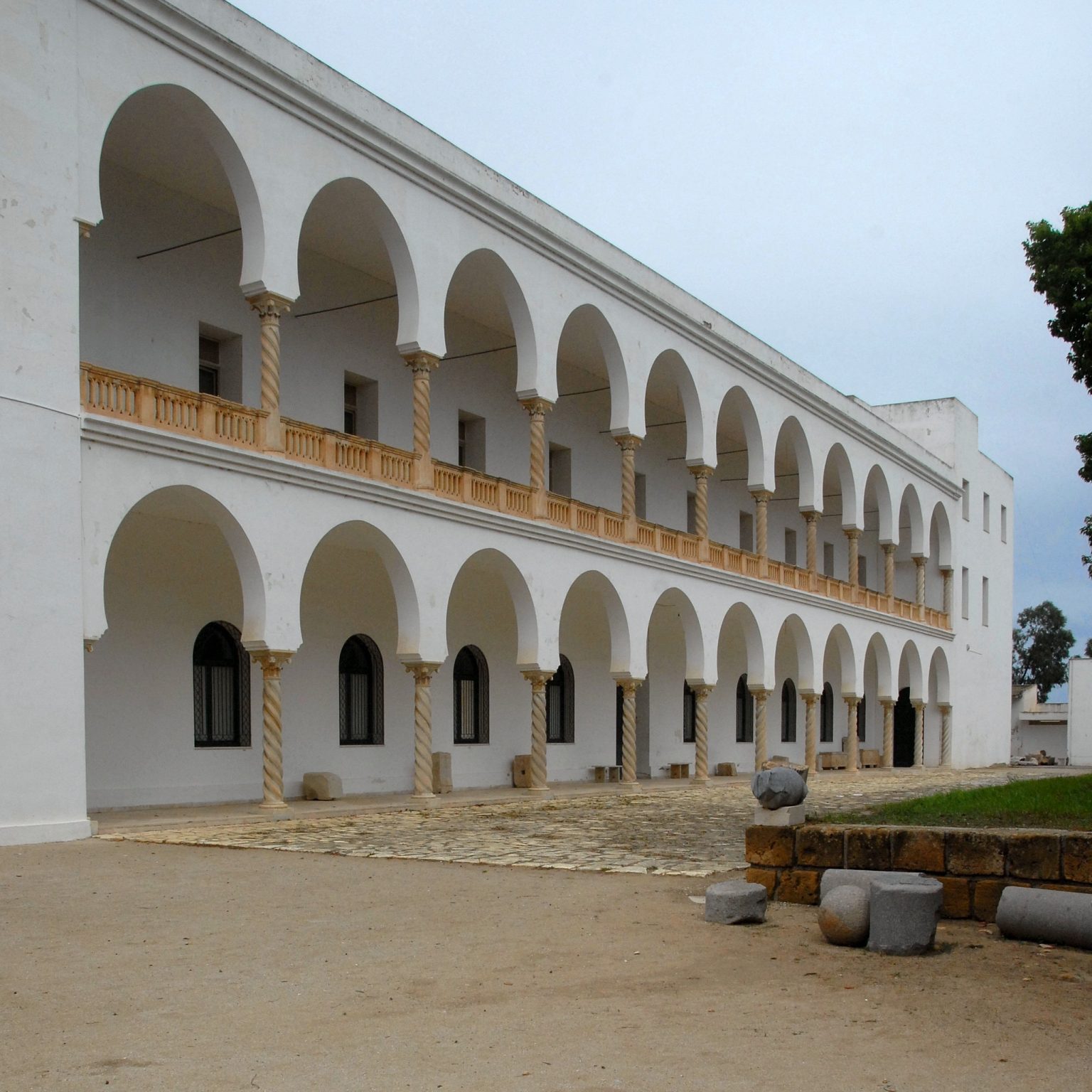

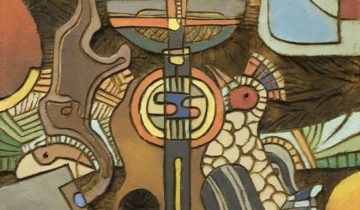

 No products in the basket.
No products in the basket.